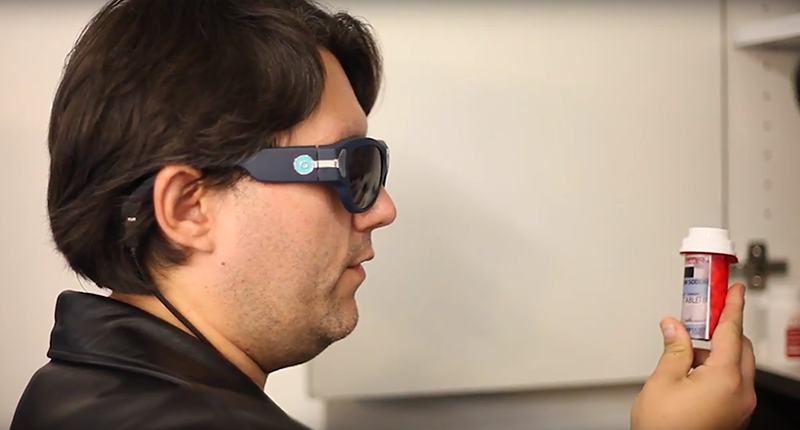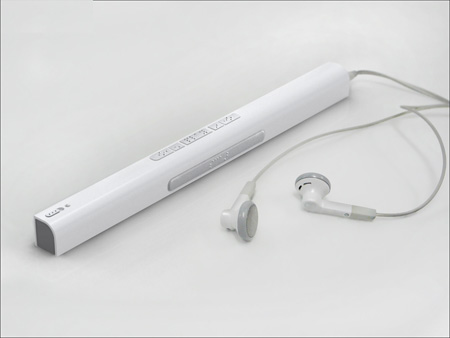Wearable Technology for Low Vision: Making Daily Life Easier
Wearable Technology for Low Vision: Making Daily Life Easier
Blog Article
Discover Cutting-edge Tools Created for the Aesthetically Damaged
The advancement of cutting-edge devices for the aesthetically impaired stands for a significant development in ease of access and self-reliance. Technologies such as clever glasses with AI capacities and mobile applications made to provide acoustic summaries are reshaping everyday experiences for customers. In addition, wearable tools that utilize haptic responses improve ecological recognition, while modern Braille advancements offer new ways to involve with message. As these devices remain to advance, their effect on the lives of those with visual problems raises vital inquiries about the future of inclusivity and freedom in numerous facets of life. What lies ahead in this technological landscape?
Smart Glasses for Navigating

Smart glasses designed for navigating are reinventing the means visually damaged individuals engage with their setting. These innovative devices use a mix of camera modern technology, expert system, and auditory feedback to supply real-time details about environments. By using challenge detection systems, smart glasses can alert individuals to potential risks, allowing more secure mobility in both acquainted and strange settings.
The assimilation of GPS innovation even more enhances navigating capabilities, permitting individuals to receive acoustic instructions as they relocate. This hands-free strategy not just fosters self-reliance yet also empowers aesthetically impaired individuals to browse urban landscapes with raised self-confidence. Furthermore, lots of wise glasses are equipped with attributes that identify sites and street signs, supplying contextual information that enhances the individual experience.
Moreover, the development of these gadgets is continuously advancing, with companies working to enhance the precision of things acknowledgment and broaden the series of navigational attributes. As smart glasses come to be more budget-friendly and easily accessible, they hold the potential to dramatically change life for aesthetically damaged customers. Inevitably, these cutting-edge devices represent an essential action toward inclusivity, offering improved movement and a greater sense of autonomy for individuals browsing the world around them.

Mobile Apps for Daily Living
Exactly how can mobile applications boost the everyday lives of visually impaired individuals? Mobile applications are transforming the way aesthetically damaged individuals navigate their settings, manage day-to-day jobs, and access info. These applications provide crucial assistance via different capabilities, promoting freedom and enhancing top quality of life.
Several ingenious mobile apps are developed particularly for everyday living. Apps like Be My Eyes connect aesthetically damaged users with sighted volunteers via video calls, enabling them to get real-time help with tasks such as reviewing labels or browsing unknown spaces. Similarly, Seeing AI, created by Microsoft, uses expert system to describe surroundings, checked out text, and identify things, successfully changing a smartphone into an effective device for everyday aid.
Additionally, navigation applications tailored for the visually damaged, such as Aira and BlindSquare, use audio-based instructions and ecological info, making it possible for customers to traverse their surroundings securely and with confidence. Beyond navigating and prompt help, mobile apps additionally sustain company and task monitoring, with features that aid users set tips, produce order of business, and track consultations. In recap, mobile applications work as indispensable resources, empowering aesthetically damaged people to lead more independent and meeting lives.
Wearable Technologies for Aid
Empowerment with technology is increasingly evident in the world of wearable devices designed to assist aesthetically damaged people. These cutting-edge devices incorporate effortlessly into day-to-day life, improving navigating and providing important feedback to users. Wise glasses geared up with cameras can review and recognize faces message aloud, allowing users to communicate even more with confidence in professional and social settings.
An additional remarkable improvement is using haptic responses systems in wearable tools. These systems make use of resonances or various other responsive signals to share information concerning the user's setting, such as barriers or adjustments in surface, boosting flexibility and safety. Wearable innovations additionally consist of wristbands that connect to smartphones, notifying users to notifications through subtle vibrations, therefore enhancing connection without dependence on visual signs.
As these innovations remain to progress, they are not just enhancing independence for visually damaged individuals however additionally fostering a better feeling of incorporation in culture. By connecting the space in between challenges faced in day-to-day living and the possibility for freedom, wearable innovations offer as crucial devices in the mission for equality and empowerment for those with aesthetic disabilities.
Audio Description Devices
Sound summary tools play a vital role in boosting availability for visually damaged people, providing them with the ability to engage with visual media. Assistive technology for the blind. These tools use narrated summaries of vital aesthetic components in films, tv programs, and live efficiencies, ensuring that individuals can fully comprehend the context and emotions shared with visuals
Audio summary can be integrated into different systems, consisting of streaming services, cinema screenings, and live movie theater. Many preferred streaming services now consist of audio description as an accessibility feature, enabling viewers to select it quickly. In enhancement to mainstream media, specialized applications content additionally exist, supplying audio descriptions for art events, galleries, and various other cultural occasions.
The efficiency of audio description rests on the skill of the storytellers, that need to communicate aesthetic details succinctly without diminishing the original sound. Innovations in this area are likewise leading the means for more customized experiences, where individuals can readjust the level of detail and pacing according to their choices.
Braille Innovations and Tools
Braille advancements and tools have considerably changed the method aesthetically impaired people engage with message and details. Modern innovations have led to the development of flexible devices that improve literacy and independence amongst individuals.
Moreover, portable Braille notetakers combine conventional Braille input with modern-day performances, facilitating note-taking, scheduling, and paper editing and enhancing on the move. Voice-activated assistive devices. These small gadgets typically include text-to-speech capabilities, bridging the void in between Braille and acoustic details
On top of that, innovative Braille printers have emerged, enabling users to produce Braille tags, records, and academic products effectively. This availability cultivates greater participation in academic and professional environments, inevitably advertising inclusivity.
Additionally, research study right into smart Braille modern technologies remains to expand. Tools that incorporate synthetic intelligence are being discovered to supply real-time navigating support and contextual info, enhancing the user experience in diverse setups. Generally, these innovations show a dedication to encouraging aesthetically damaged people through innovation, guaranteeing they can conveniently access and engage with the world around them.

Conclusion
The improvement of ingenious devices for the visually damaged considerably enhances self-reliance and top quality of life. These modern technologies see this here not only foster higher inclusion however also promote autonomy in everyday tasks, eventually contributing to an extra available and fair society for aesthetically damaged people.
As smart glasses come to be a lot more inexpensive and available, they hold the prospective to substantially change day-to-day life for visually impaired users. Mobile apps are transforming the method visually impaired individuals navigate their atmospheres, handle everyday check my reference jobs, and gain access to details. Apps like Be My Eyes link aesthetically impaired individuals with sighted volunteers by means of video clip phone calls, permitting them to obtain real-time help with jobs such as reviewing labels or navigating unknown spaces.Additionally, navigating applications customized for the aesthetically impaired, such as Aira and BlindSquare, use audio-based instructions and ecological details, enabling users to traverse their environments safely and confidently.The improvement of ingenious tools for the visually impaired significantly improves independence and quality of life.
Report this page